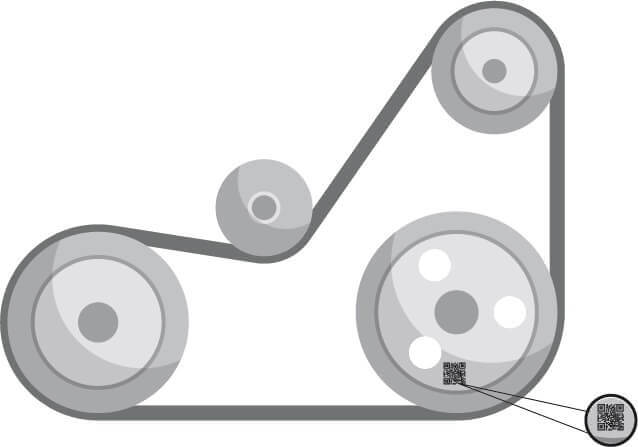
Direct part marking can be achieved via dot peening, or inkjet printing. DPM codes are used in a wide range of industries like automotive, and medical devices because they help identify the materials used to make a part and tracking parts with DPM codes helps minimize counterfeiting and ensure quality.
What’s the challenge?
1. DPM codes cannot be reprinted like labels.
2. DPM codes pass through different oils and chemicals that damage label barcodes like car engines.
3. DPM codes are very tiny like smart phone components.
Direct part-marking methods that directly mark components have a tendency to produce codes with poor contrast, poor cell position, or varying cell size. Also marked surfaces are seldom as clean and constant as a label. The surface of a part can be soft and shiny, streaked or granular. That is why the verification method for DPM codes should be accurate. The unreadable DPM code can be quite a hassle. This can lead to parts being unusable or unsafe and to recalls.
Solution
Use barcode/label verification to check your DPM codes are error-free.
Barcode verification is an effective way of verifying DPM quality. Verification is crucial to any barcode tracking solution, so a verifier must be included to grade a scanned barcode based on pre-loaded data. It either verifies that barcode is good or checks that it has right data structure and clear and easy to read. A grade measures not just how well code can be scanned but how well code can be maintained throughout its lifecycle.
The manufacturer cannot control how equipment users use DPM code reading or conditions they do so. The best possible quality work is required to ensure high marks and highest possible contrast and firmness.
According to international standards barcode verifier must check a variety of different parameters and make sure that they fall within an acceptable range. You can analyze which features have most impact on causing a barcode to fail to scan by analyzing all different ways you can alter or damage one. This command helps predict scanning success with other scanners under different conditions.
A barcode verifier must ensure that each cell on a scan-able barcode is of proper size and at the correct location. It also needs to be free from damage and contrast effectively against its background. This type of lighting is prime in DPM code verification. The standard allows for several lighting angles, including 30,45,90 degrees and dome lighting.
30 and 90-degree lighting helps you illuminati symbols on curved and reflective surfaces. The code must be captured on a screen when verification process is finished, and your grade will appear. Once you complete the verification process, you will receive a formal grade.
Follow Visionify.ai on LinkedIn & Twitter

